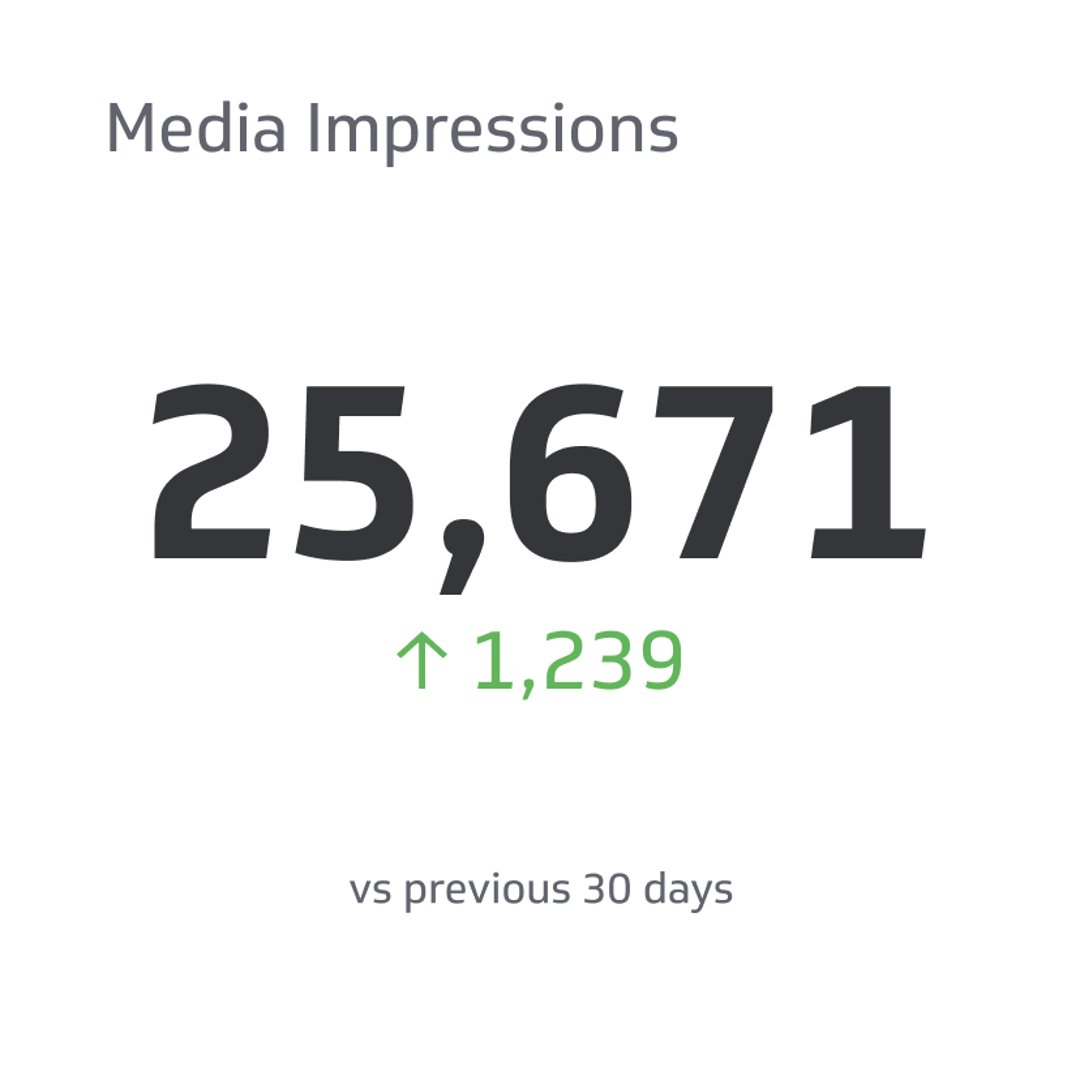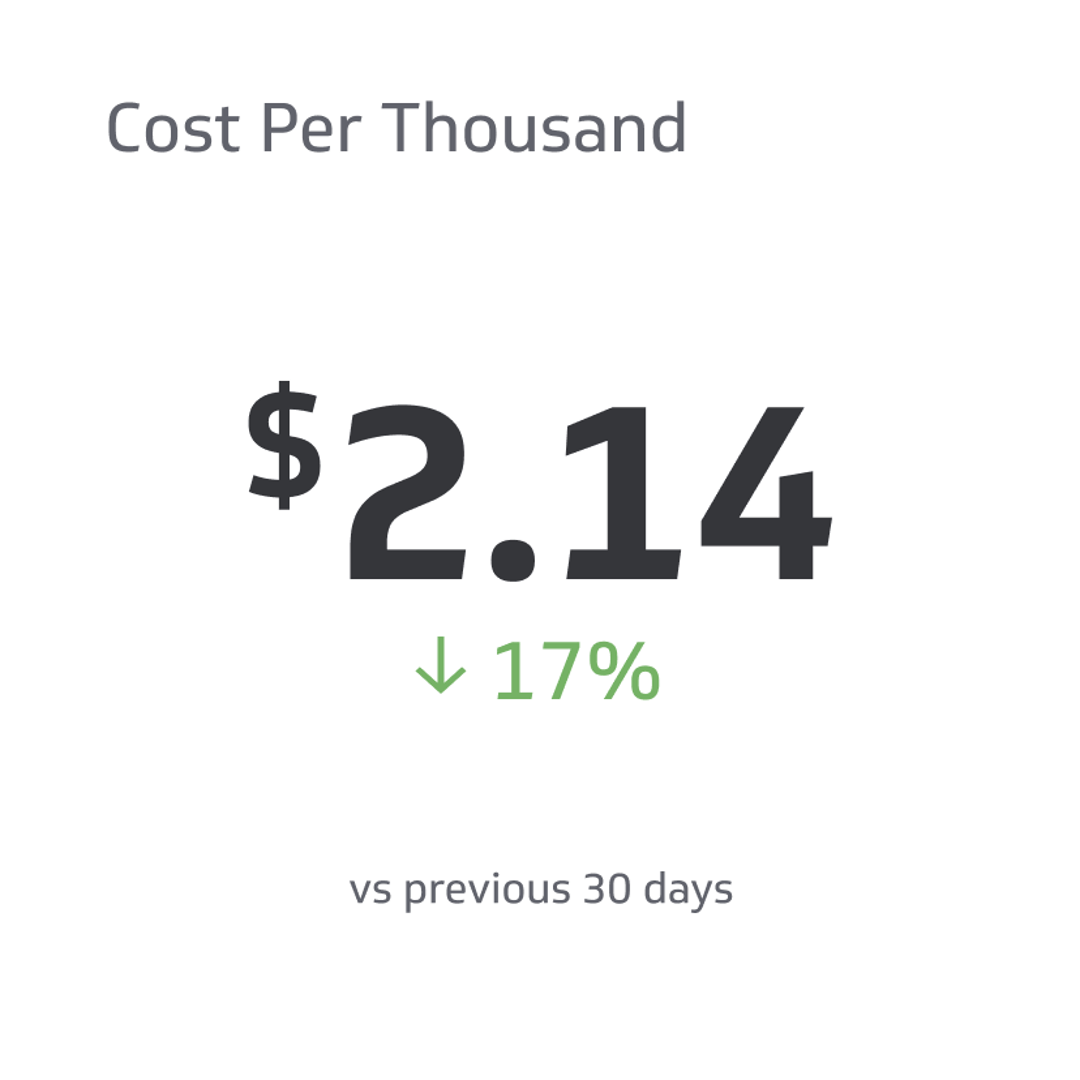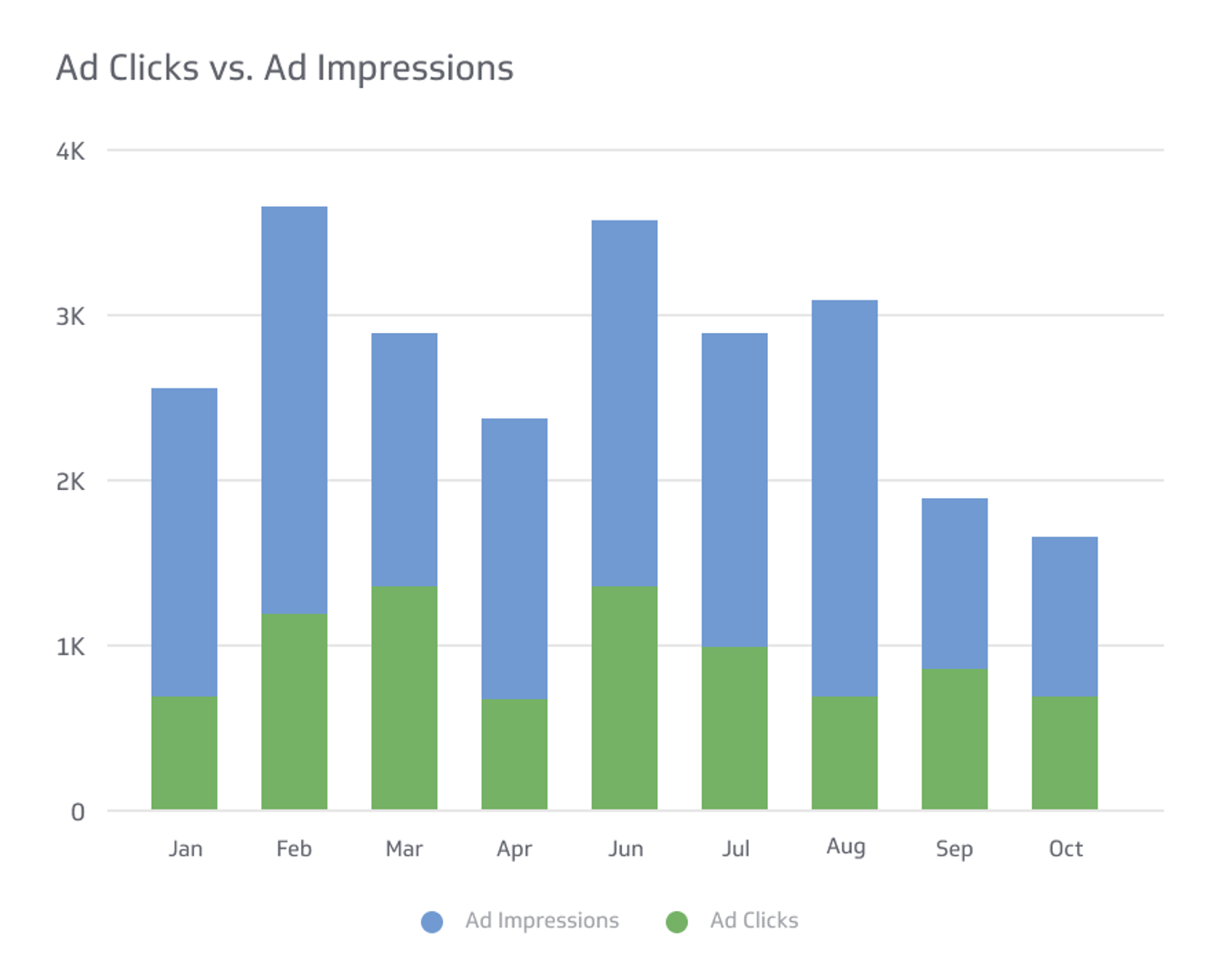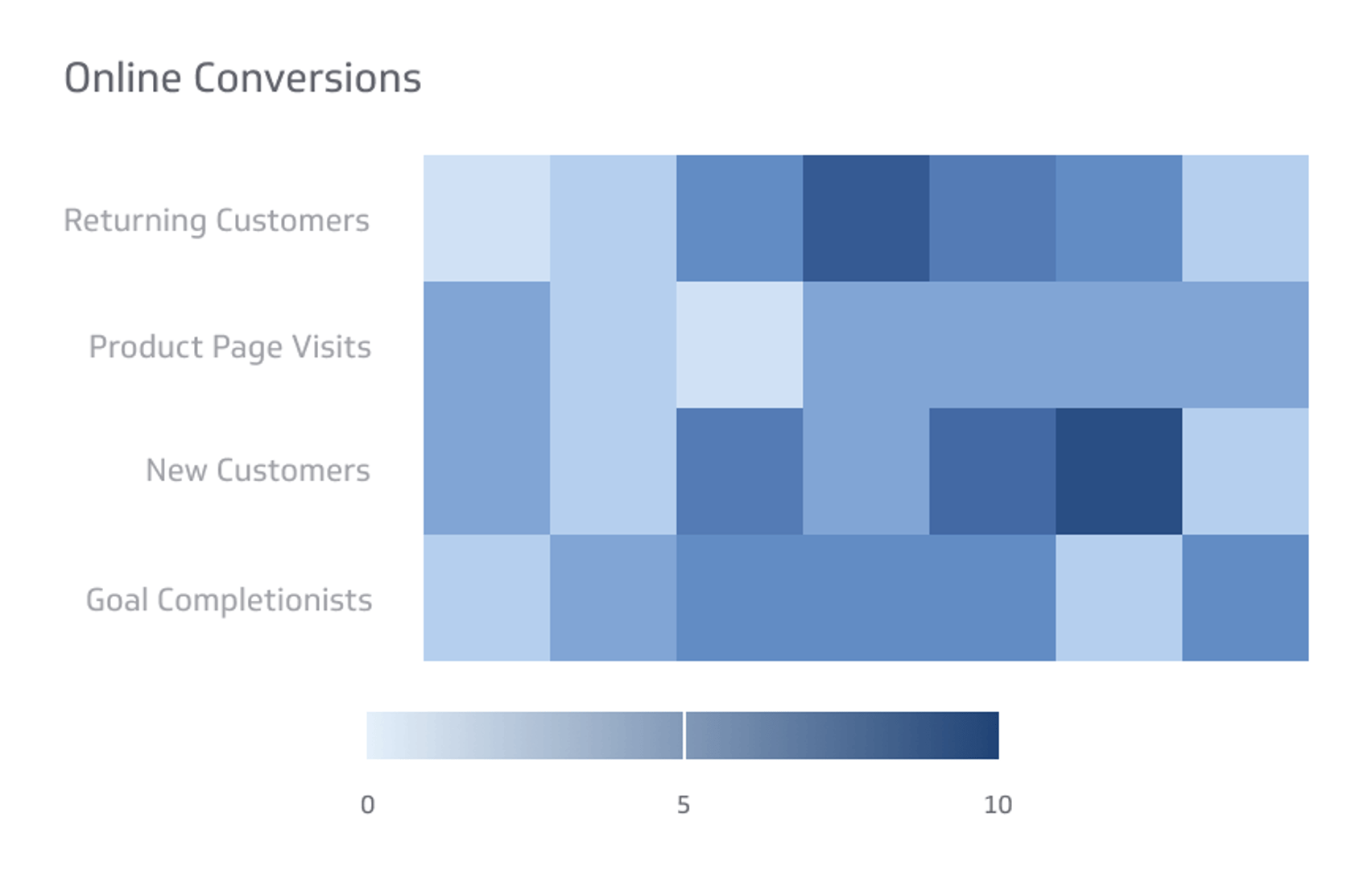Media Impressions
Track all your Digital Marketing KPIs in one place
Sign up for free and start making decisions for your business with confidence.

In today's competitive digital marketplace, your brand must stand out and leave a strong impression on your target audience. To thrive, it's essential to quantify the impact of your marketing and advertising campaigns on your consumers.
One way to measure this impact is through media impressions.
A media impression is an important digital marketing metric for measuring the effectiveness of your campaigns. It represents the potential audience reached by media content, such as advertisements.
In the article, we'll further dive into the importance of media impressions, their types, and the challenges they present to help you understand how they can help businesses better evaluate their campaigns.
What Are Media Impressions?
Media impressions measure the approximate audience your media content has reached, whether an advertisement or a social media post. They represent the estimated number of times someone from the target audience has seen the content.
Media impressions, however, don't signify engagement or interaction; they merely reflect the potential audience exposed to your content.
Why Are They Important?
Media impressions are essential for marketers and advertisers to assess how many people they are potentially reaching.
By scrutinizing impressions, you can:
- Evaluate your campaign's success.
- Identify areas of improvement.
- Allocate your marketing budget effectively.
- Make informed decisions to enhance your brand's presence.
Types of Media Impressions
Marketers categorize media impressions into four primary types: organic, paid, earned, and owned. Each type serves a distinct purpose in your marketing strategy.
Organic Impressions
Organic impressions originate from the natural exposure of your content on various platforms. In other words, they result from users naturally discovering and engaging with the content by scrolling or searching search engine results pages.
Organic impressions are free of targeted marketing efforts like advertising or paid promotions. They represent a user's genuine interest in the content without forced promotions, which helps businesses understand what content truly resonates with their audience.
Paid Impressions
Paid impressions occur when you allocate resources to promote your content through advertising platforms. This includes pay-per-click (PPC) advertising, display advertising, or sponsored social media posts.
Paid impressions help you reach a broader audience, targeting specific demographics or interests. By analyzing them, businesses can identify the most effective advertising channels and strategies and adjust their approach to optimize their return on investment (ROI).
Earned Impressions
Earned impressions result from users' voluntary sharing, liking, and commenting on your content. They're the result of users sharing or promoting the content voluntarily, without any direct payment or promotion from the content creator.
They reflect your audience's appreciation and endorsement of your content. By creating high-quality, engaging content that users are likely to share, businesses can build brand awareness and credibility among their target audience.
Owned Impressions
Owned impressions stem from your brand's channels, such as your website, blog, or social media profiles.
For example, if you publish and promote a blog post on your website through your social media channels, the resulting views and engagement would be considered owned media impressions.
They represent the audience you've cultivated and nurtured through your content and branding efforts.
Measuring Media Impressions
To unlock the potential of media impressions, you must master the art of measuring them.
Below, we'll explore the key metrics that help you evaluate your campaign's success.
Reach
Reach is the total number of unique individuals who view your content. Assessing reach enables you to refine your target audience and make data-driven decisions that ensure your message targets the right people.
Example: A vegan protein bar brand targets health-conscious consumers and fitness enthusiasts to increase the likelihood of reaching individuals genuinely interested in their product.
Frequency
Frequency is the mean number of times a unique individual has viewed your content within a given period.
However, the potential for ad fatigue makes it a double-edged sword in your marketing arsenal. Striking a delicate balance in ad frequency is essential to retain consumer interest.
Example: Imagine your target audience sees your ad for a fitness app three times a day—this frequent exposure can ingrain your brand in their minds, bolstering recognition.
However, if they encounter the same ad ten times a day, they may succumb to ad fatigue, diminishing its effectiveness.
Gross Rating Points (GRPs)
GRPs help you evaluate and measure your campaign's overall performance. You gain insight into your campaign's reach and frequency by quantifying the total impressions generated as a percentage of your target audience.
Example: Suppose you launch two campaigns for a reusable water bottle: one targeting eco-conscious consumers and the other targeting outdoor enthusiasts. By comparing both GRPs, you can discern which resonates more with your audience, informing your future marketing decisions.
Cost Per Thousand Impressions (CPM)
CPM measures the cost of reaching 1,000 individuals with a particular content. It allows you to compare the cost of advertising across different platforms and channels and understand which channels and strategies are most cost-effective.
By analyzing the CPM across various platforms, you can allocate your resources strategically and maximize the return on your marketing investment.
Example: An eco-conscious boutique is running a social media campaign for a new sustainable clothing line. They discover that the CPM for Instagram is $5, while the CPM for Facebook is $10. This information reveals that reaching 1,000 impressions on Instagram is more cost-effective than on Facebook.
Strategies to Increase Impressions
Maximizing the reach and impact of your media impressions is important to stay ahead of the competition in today's competitive business landscape.
Here are some powerful strategies to help strengthen your brand's visibility.
Quality Content
Crafting engaging, informative, and visually appealing content is pivotal in captivating your audience and generating more impressions.
Example: Writing a blog post featuring compelling content and eye-catching visuals to attract more readers and encourage social sharing, thus multiplying your impressions.
Proper Targeting
Identify your target audience by harnessing demographic, geographic, and behavioral data. Precise targeting ensures that your content reaches users more likely to resonate with your message, yielding increased impressions.
Example: Promoting a kid-friendly cookbook by targeting parenting communities on social media platforms to bolster your campaign's effectiveness.
Retargeting
Retargeting, or remarketing, involves showcasing your content to users your brand has previously interacted with. This tactic helps you re-engage lost prospects, increasing impressions and nurturing potential customers.
Example: Displaying ads for a luxury watch brand to users who have visited the brand's website to rekindle interest and drive additional impressions.
A/B Testing
Conduct experiments with various headlines and images to understand what resonates most with your audience. A/B testing empowers you to optimize your content for maximum impact, ultimately generating more impressions.
Example: Testing different ad designs for a fitness app to identify which version attracts more clicks and garners more impressions.
Influencer Partnerships
Partner with influencers in your niche to amplify your reach and connect with new audiences. Influencers can endorse your brand or create captivating content, increasing your impressions and enhancing brand credibility.
Example: Partnering with a renowned travel blogger to promote a new eco-friendly luggage line to boost visibility and garner more impressions.
Challenges With Media Impressions
While media impressions hold immense significance, they also present certain challenges. Navigating these obstacles is crucial to optimizing your campaign's success and maximizing your reach.
Ad Fraud
Fraudulent activities like bots and click farms can inflate your impression metrics, leading to distorted data and squandered resources.
Implement strict monitoring and adopt industry-approved solutions, like fraud detection software, to counteract ad fraud and ensure accurate impression data.
Ad Blockers
The prevalent use of ad blockers prevents your ads from reaching potential audiences, resulting in fewer impressions.
To bypass ad blockers, diversify your marketing channels and explore native advertising that seamlessly integrates your ads within the content, making them less intrusive and more likely to be viewed.
Limited Attention Span
The digital landscape has an overwhelming amount of content, making it increasingly challenging to capture user attention.
To overcome this hurdle, create enthralling content and employ visual storytelling that seizes your audience's gaze and boosts impressions. Additionally, ensure your content is short yet engaging to keep the users' attention.
Viewability Concerns
Impressions alone don't guarantee that users genuinely see your content. Poor viewability, such as ads displayed below the fold or slow-loading content, can hamper your reach.
To tackle this challenge, optimize your content for various devices and screen sizes, ensuring it loads swiftly and is displayed prominently, enhancing viewability and maximizing impressions.
Final Thoughts
Media impressions are crucial for businesses to measure the impact of their advertising and promotional efforts.
By understanding how different types of media impressions work, you can tailor your advertising strategies to maximize the reach and impact of your content, thus achieving long-lasting success in the competitive digital landscape.
Related Metrics & KPIs



